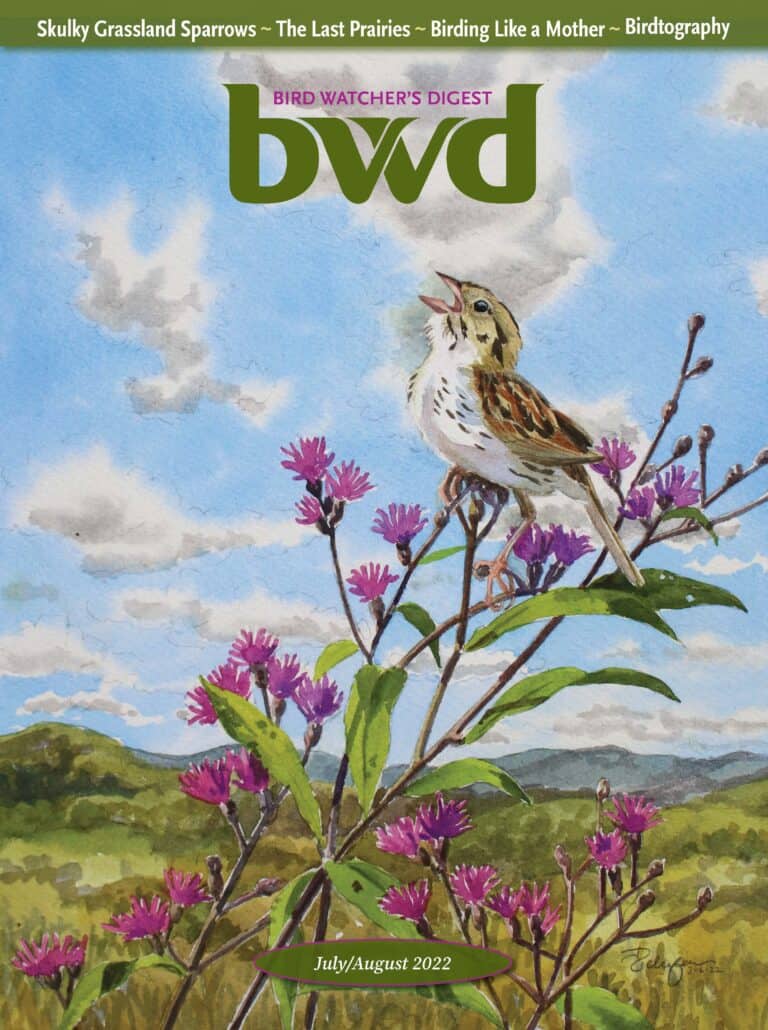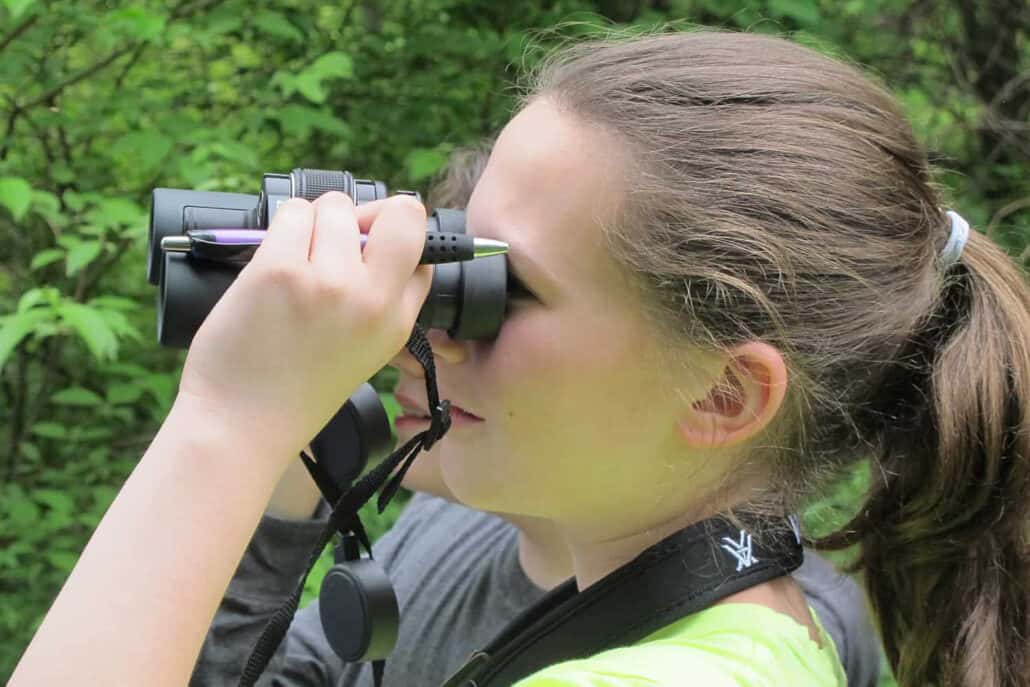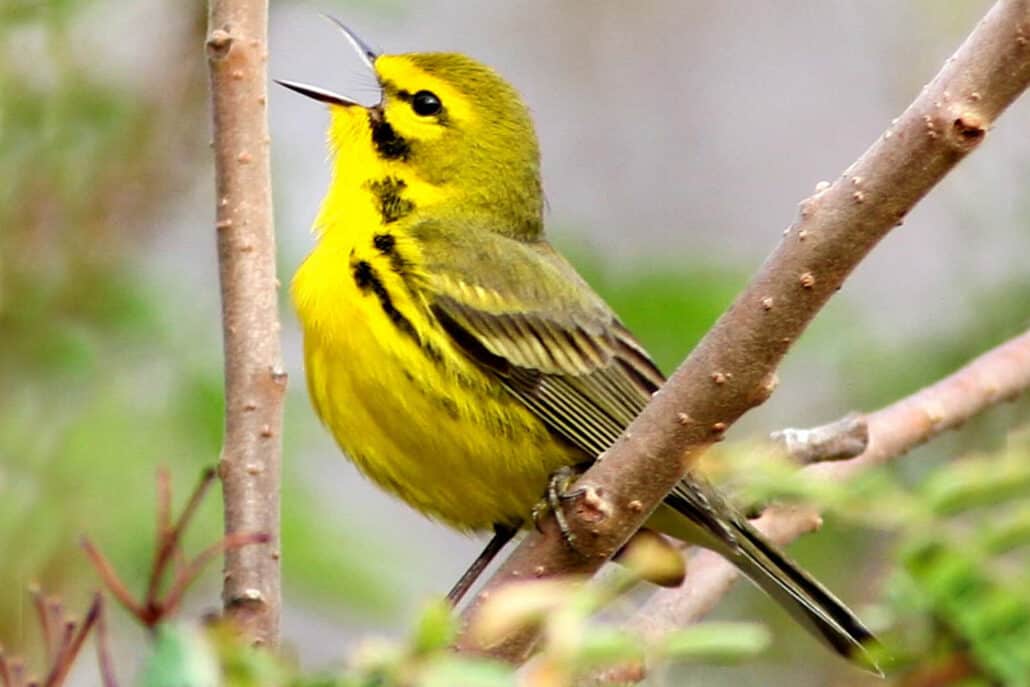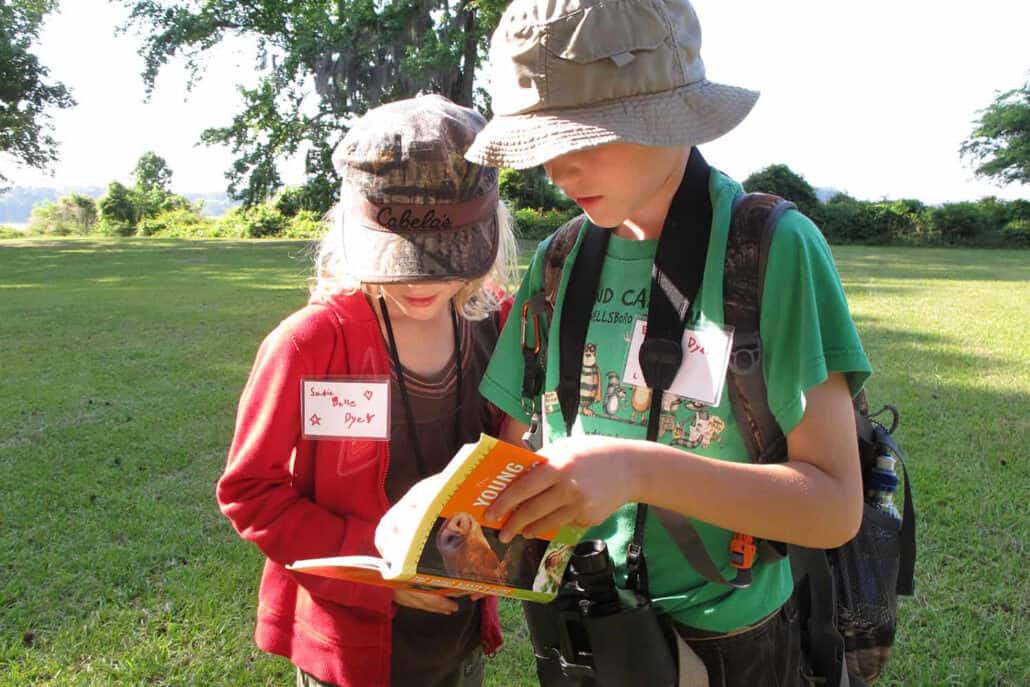
Choosing your binoculars
Every birder needs binoculars. If you’re lucky you might be able to borrow some binoculars from someone in your family. If no “loaners” are available, you’ll want to buy (or ask your parents to buy) some binocs of your very own. Binoculars range in price from about $25 to more than $1,000, but good ones start at about $100.
If birding becomes a serious hobby for you, you’ll eventually want to purchase the best pair of binoculars you can afford. It’s a fact of birding life that the more expensive a binocular, the better quality you are getting. And better quality translates directly into better views at birds, which makes them easier to identify.
The most important thing is that your binoculars are comfortable to use. If you’re buying your binoculars from a retail store, ask to try out the various models they recommend for someone your age. Try them out before you buy them to make sure they are a good fit for you. Check to see that the eyepieces will adjust to fit the distance between your eyes, that the binoculars are not too heavy or too big, and that they just feel comfortable and easy to use.
When choosing binoculars, you have to decide what power, or magnification, is best. For most beginners, the optimum magnification is between 6 and 8 power. Avoid the “sport” binoculars that only magnify objects four or five times. Many birds are small, and the lower magnification simply is not enough to provide satisfactory views. Also avoid full-sized 10- and 12-power binoculars.
All binoculars are labeled with two numbers, like this: 8×45. The first number is magnification, and the second is the diameter, in millimeters, of the “objective” or outer lens (the opposite end from the one you look into). Look for 7x or 8x binoculars with a 30 to 42 objective lens (second number).
Using your binoculars
Once you get your binoculars home, take a few minutes to practice using them. Basic binocular use is fairly straightforward: Point the binoculars at an object and look through them. There are potential glitches in the process, however, and you should be prepared to recognize and correct these problems.
The first thing is to make sure the eyepieces are properly aligned to fit the distance between your eyes. The second step is to adjust the focus. Make sure the focus is right by focusing on the letters or numbers on a sign. You can see how the image quality changes by turning the focus knob while you’re looking through the binoculars.
Next, practice a few times on stationary objects. The trick is to stare at what you want to look at and bring the binoculars to your eyes without moving your head or eyes. It will only take a few practices before you’ve mastered the trick, so don’t give up if you have trouble at first.
Once you are comfortable with using binoculars, it’s time to go find some birds to look at and identify.

Looking to Subscribe?
Get 6 print issues of the magazine delivered to your door & free digital access
One Year Print Subscription: $26
(to US or Canada, includes digital access)
One Year Digital-only Subscription: $15




